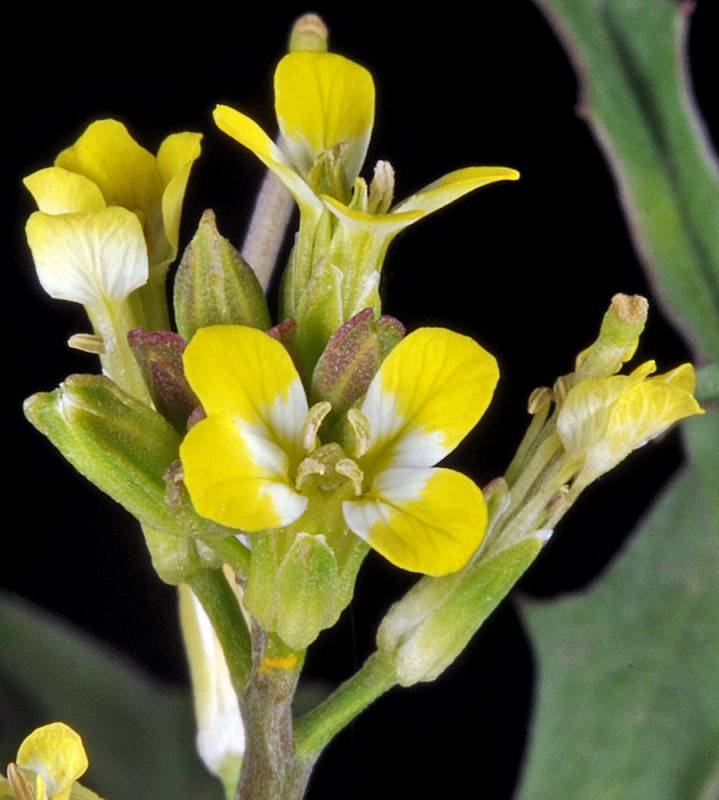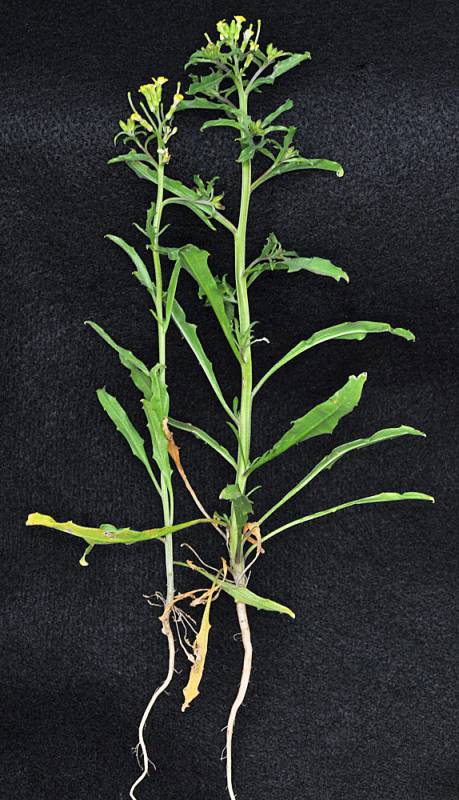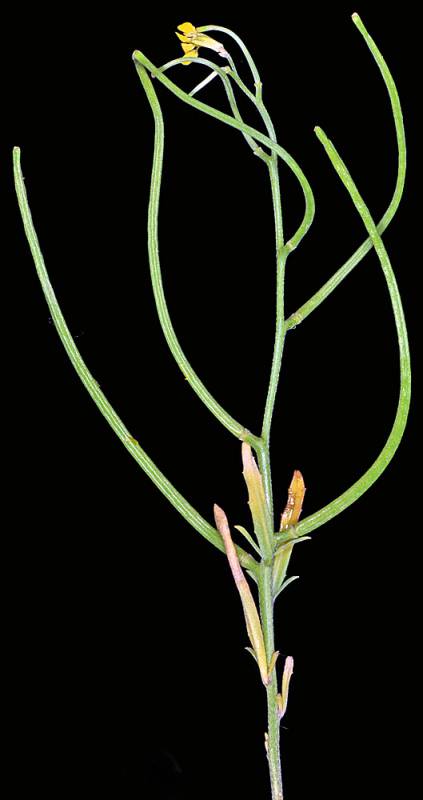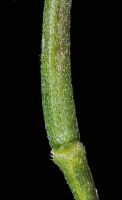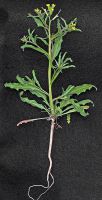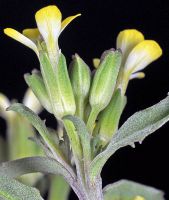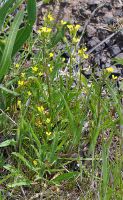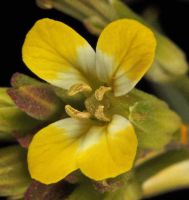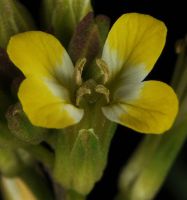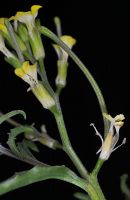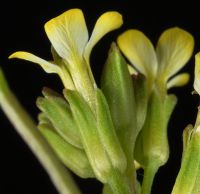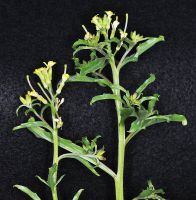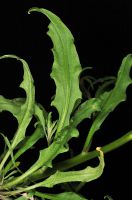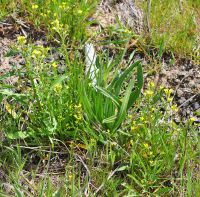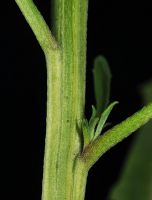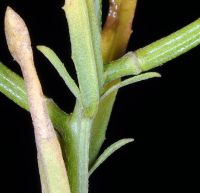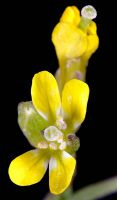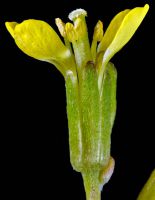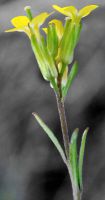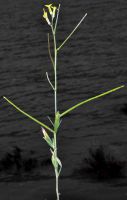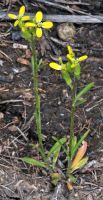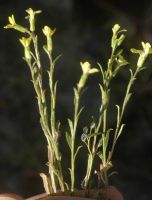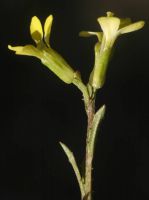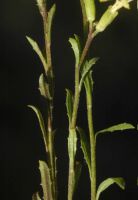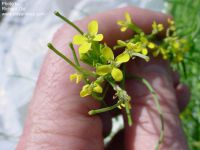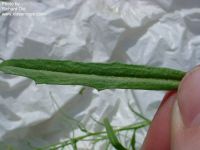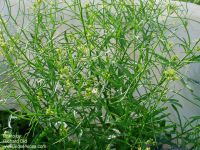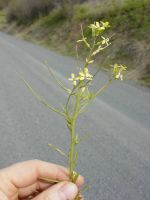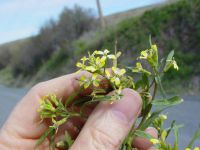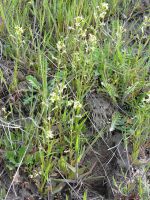Distribution: Occurring east of the Cascades crest and in the Columbia River Gorge in Washington; British Columbia to California, east across much of North America to the Atlantic Coast.
Habitat: Wasteland in dry areas, plains and lower mountains.
Flowers: April-June
Origin: Introduced from Eurasia
Growth Duration: Annual
Conservation Status: Not of concern
Pollination: Bees, butterflies, flies, hummingbirds
Simple to freely-branched annual, the stem 2-5 dm. tall, somewhat grayish.
Basal leaves several, lanceolate to oblanceolate, up to 15 cm. long and 12 mm. broad, wavy-toothed to wavy-margined; cauline leaves similar, reduced upward, sometimes becoming entire.
Flowers rather showy, in crowded, bractless racemes; pedicles stout, 2-4 mm. long, almost as thick as the siliques; sepals 4, the outer 2 saccate at the base; petals 4, light yellow, 6-9 mm. long, very slenderly clawed; stamens 6; style 1 mm. long, stigma bi-lobed.
Siliques spreading to ascending, curved, rigid, 6-8 cm. long and about 1.5 mm. thick, nearly quadrangular, constricted between the seeds; seeds in 1 series, wingless.
Publication: Demonstr. Pl. 17. 1753.
PNW Herbaria: Specimen records of Erysimum repandum in the Consortium of Pacific Northwest Herbaria database
WA Flora Checklist: Erysimum repandum checklist entry
OregonFlora: Erysimum repandum information
E-Flora BC: Erysimum repandum atlas page
CalPhotos: Erysimum repandum photos

